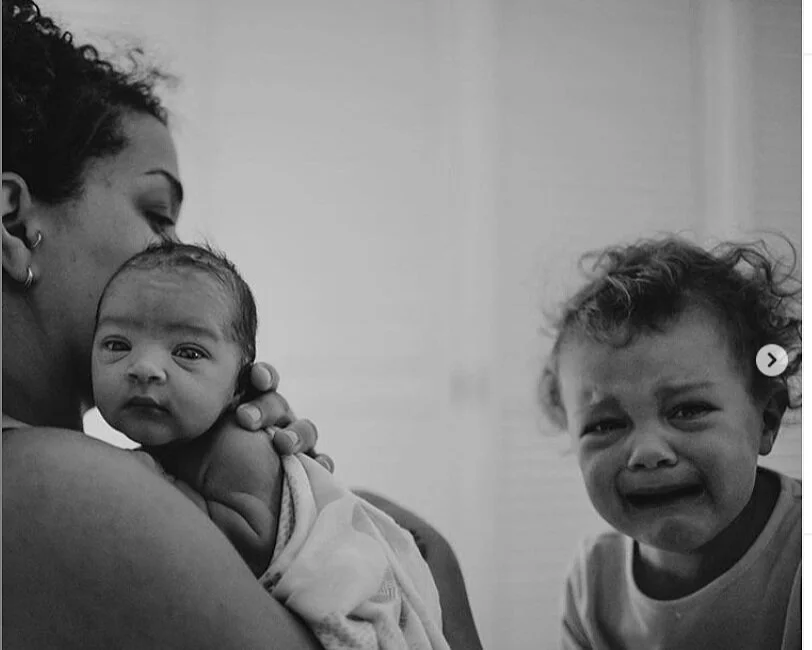Many parents grapple with the challenging behaviors of their babies, toddlers, and preschool-aged children and wonder: Can a young child manipulate or be naughty? What does child discipline look like for babies and young children?
These are important questions, as the meanings that we attribute to our children’s behavior affects how we feel and respond. Seeing our children’s behavior as manipulative or bad sets us up to respond in harsh or punitive ways that worsen rather than calm the situation. It’s essential that parents’ expectations for their young children, and the interpretations they make of their children’s motivations, be informed by an understanding of what is normal for each age and developmental stage. Interactions that seem driven by purposeful mal-intent are often creative strategies central to your child’s developmental milestones. When my son was almost one, he started to drop his food off his high chair, watching what would happen to the food and also closely observing my response. While it would have been easy to interpret what he was doing as manipulative or naughty, I came to understand that he, like all young children, was investigating cause and effect. In this situation, he was discovering gravity and he was also fascinated to see how his actions impacted me, whether it led to my frustration at his refusal to stop or to my delight in the game he was inviting me to play by picking up the food he dropped.
We come into the world as little scientists. From infancy, children are driven to explore and investigate all facets of their world, including exploring the full range of emotions in themselves and in others, the most compelling of which are those of their parents, or other primary caregivers. An astonishing number of neural (nerve cell) connections in your baby’s brain are made each minute in response to their interactions with you, and from numerous, similar, repeated experiences over time, those connections are laid down as established neural pathways. As I discussed in the October and November newsletters, your baby’s relationship with you will be the central thing that organizes their experience of their world for the first six years of their life.
Young children are driven by emotion, not logic. They have very little self-control and are dependent on you to help them learn to manage their intense emotions and communicate in acceptable ways. These skills take years to evolve, so don’t blame yourself or your child when you find yourself helping your child manage their great disappointment for the thousandth time in response to a limit.
Time In vs. Time Out
The purpose of child discipline is to assist children to regulate their emotions, increase their control over their behavior, and learn acceptable ways of communicating over time within a developmentally meaningful framework.
Limits make children feel safe and secure. When your child tests the limits, your kind, firm and consistent responses help provide a predictable world where your child knows what they can expect.
Children between birth and age three are not developmentally capable of making use of “time out” as a discipline strategy. Even after age 3, time out is of questionable usefulness before age six, and even then is not ideal as a primary strategy for changing problematic behavior. Young children need physical proximity and emotional connection in order to calm down after dysregulation and to learn new ways of interacting. If a young child is overwhelmed or distressed, physical and emotional separation in the form of time out will increase the child’s anxiety and fear and escalate the situation. The best use of time outs is when parents themselves need some time to get calm enough to reconnect with their child. Instead of time outs, try a “time-in”. “Time-ins” involve a break in the current situation, usually by removing the child in order to manage feelings and calming down with parent/caregiver assistance. When calm enough, the parent addresses the issue and assists the child in a reparative act if relevant. Time-ins build capacities for emotion regulation and self-control, both vital lifelong skills. This alternative to a “time-out” can allow your child to make use of your help calming down, and when calm enough, to address what happened in order to learn new ways of being.
BASIC TIPS
Manage your own feelings so that you are calm enough to help your child. Strive to maintain control over your response to your child’s actions.
Set the limit and keep it short and sweet: “We don’t throw plates. It’s not safe.”
With empathy, validate your child’s feeling: “I see you’re really disappointed that your sister is using the yellow plate."
Provide simple choices: “Would you like to us the red plate or the purple plate?”
Every parent deserves the support and help they need to have the best possible relationship with their child. For some, consulting with a therapist specifically trained in infant mental health or early childhood mental health can be of great benefit.
MEET JILL SULKA
Jill Sulka, Psy.D. is a licensed psychologist who specializes in infant and early childhood mental health. She provides parent consultation, infant-parent and child-parent psychotherapy, and child play therapy in her office and at home, depending on the needs of the family. Dr. Sulka has been providing psychological services for 20 years, and has directed several programs for parents and their children birth to 8 years old.She believes that every child and parent deserve the opportunity to develop a relationship together that best supports that child’s potential to grow well and love well. She can be reached at (510) 326-2002 and jillsulka@gmail.com.

